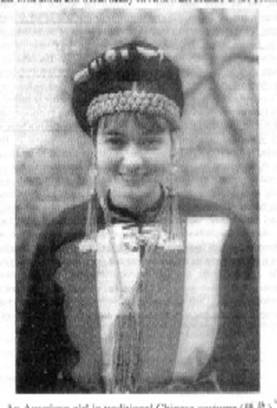时间:2016-03-03 07:05:59
The profession is taking steps to require young doctors to train in hospices, to test knowledge of aggressive pain management therapies, to develop a Medicare billing code for hospital-based care, and to develop new standards for assessing and treating pain at the end of life.
Annas says lawyers can play a key role in insisting that these well-meaning medical initiatives translate into better care. “Large numbers of physicians seem unconcerned with the pain their patients are needlessly and predictably suffering,” to the extent that it constitutes “systematic patient abuse.” He says medical licensing boards “must make it clear… that painful deaths are presumptively ones that are incompetently managed and should result in license suspension.”
56. From the first three paragraphs, we learn that ________________________.
[A] doctors used to increase drug dosages to control their patients’ pain
[B] it is still illegal for doctors to help the dying end their lives
[C] the Supreme Court strongly opposes physician-assisted suicide(B)
[D] patients have no constitutional right to commit suicide
57. Which of the following statements is true according to the text?
[A] Doctors will be held guilty if they risk their patients’ death.
[B] Modern medicine has assisted terminally ill patients in painless recovery.
[C] The Court ruled that high-dosage pain-relieving medication can be prescribed.(C)
[D] A doctor’s medication is no longer justified by his intentions.
58. According to the NAS’s report, one of the problems in end-of-life care is ________________________.
[A] prolonged medical procedures
[B] inadequate treatment of pain
[C] systematic drug abuse(B)
[D] insufficient hospital care
59. Which of the following best defines the word “aggressive” (Line 3, Paragraph 7)?
[A] Bold
[B] Harmful
[C] Careless(A)
[D] Desperate
60. George Annas would probably agree that doctors should be punished if they ________________________.
[A] manage their patients incompetently
[B] give patients more medicine than needed
[C] reduce drug dosages for their patients(D)
[D] prolong the needless suffering of the patients
Directions:
Read the following text carefully and then translate the underlined segments into Chinese. Your translation should be written clearly on ANSWER SHEET 2. (10 points)
Almost all our major problems involve human behavior, and they cannot be solved by physical and biological technology alone. What is needed is a technology of behavior, but we have been slow to develop the science from which such a technology might be drawn. 61) One difficulty is that almost all of what is called behavioral science continues to trace behavior to states of mind, feelings, traits of character, human nature, and so on. Physics and biology once followed similar practices and advanced only when they discarded them. 62) The behavioral sciences have been slow to change partly because the explanatory items often seem to be directly observed and partly because other kinds of explanations have been hard to find. The environment is obviously important, but its role has remained obscure. It does not push or pull, it selects, and this function is difficult to discover and analyze. 63) The role of natural selection in evolution was formulated only a little more than a hundred years ago, and the selective role of the environment in shaping and maintaining the behavior of the individual is only beginning to be recognized and studied. As the interaction between organism and environment has come to be understood, however, effects once assigned to states of mind, feelings, and traits are beginning to be traced to accessible conditions, and a technology of behavior may therefore become available. It will not solve our problems, however, until it replaces traditional prescientific views, and these are strongly entrenched. Freedom and dignity illustrate the difficulty. 64) They are the possessions of the autonomous (self-governing) man of traditional theory, and they are essential to practices in which a person is held responsible for his conduct and given credit for his achievements. A scientific analysis shifts both the responsibility and the achievement to the environment. It also raises questions concerning “values.” Who will use a technology and to what ends? 65) Until these issues are resolved, a technology of behavior will continue to be rejected, and with it possibly the only way to solve our problems.
66. Directions:
Study the following picture carefully and write an essay entitled “Cultures -- National and International”.
In the essay you should
1) describe the picture and interpret its meaning, and
2) give your comment on the phenomenon.
You should write about 200 words neatly on ANSWER SHEET 2. (20 points)

An American girl in traditional Chinese costume (服装)
Section I: Listening Comprehension (20 points)
Part A (5 points)
|
1. sociology |
2. 1930 |
3. 23 |
4. religions |
5. 1954 |
Part B (5 points)
6. cameramen/camera men
7. a personal visit
8. depressed
9. among advertisements
10. take firm action
Part C (10 points)
|
11. [D] |
12. [B] |
13. [C] |
14. [D] |
15. [B] |
|
16. [A] |
17. [A] |
18. [D] |
19.&nbs |